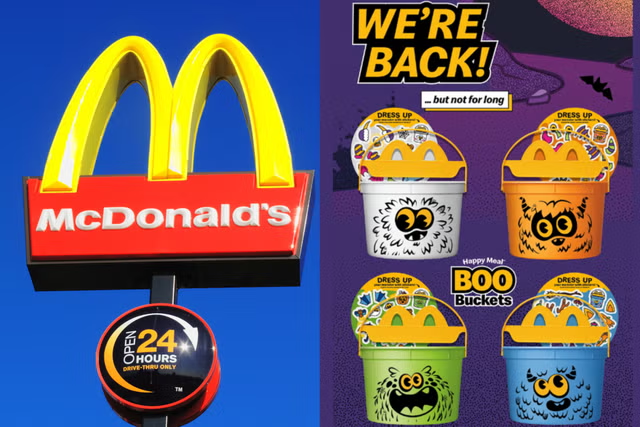Our regular gardening column, Personal Growth, is not about plant names and weeding tips (although a few might come up). It is about reflections, memories and feelings.
Many people who love their garden don’t consider themselves gardeners – so what draws them so strongly to that green patch outside the back door? This week we talk to chef and television personality Rick Stein.
Where do you live and what kind of garden do you have?
My wife Sarah and I live in Padstow, Cornwall. From our top window, we can see the town, the harbour and the estuary – where I often go for a swim. Our house is about 150 years old and is quite small. I call it a cottage; it certainly feels like one. I bought it in 2004, and it has a garden at the back which came with rambling roses, wisteria and an old cherry tree.
Over the years, the shrubs on either side got out of control so, during lockdown, we asked our gardener to help us create a more manageable garden. At the same time, we created a new studio kitchen at the end of it to film all my TV work. One of my sons, Ed, who lives nearby, built it, complete with sliding doors opening onto the garden.
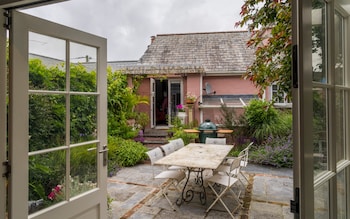
Tell us about the new garden?
One of the great things about this garden is that, although we’re beside the sea, we’re sheltered from strong high winds and it’s a bit of a sun trap, so most things grow well. We’ve created a generous path using Cornish slate and in the centre is a big marble table with old white folding chairs that we used to have at the Seafood Restaurant.
We’ve kept the beds on either side and filled them with daffodils and tulips for spring; tall blue agapanthus for summer. We did cut back the rambling roses and wisteria, but they still flower in abundance. We also planted three types of dwarf crab apple, because I absolutely love crab apple jelly and the trees look beautiful in the autumn. Lastly, I had to make plenty of space for my herbs.
What herbs do you grow?
Of all the plants in the garden, herbs are the most important. They are there for a reason: my cooking. Some, like rosemary, bay and chives, I grow in the ground, but most are in terracotta pots – lots and lots of them. I’ve probably got nearly every herb for cooking that grows in this country. There’s at least six different mints, including Vietnamese mint, which is a cross between mint and coriander, and is the real deal if you’re cooking Vietnamese or Thai dishes.
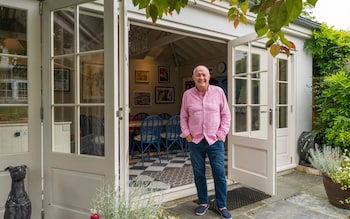
I’ve got at least three types of thyme, plus everything from angelica, basil, chervil and dill to fennel, marjoram, sage, tarragon and parsley, which I use all the time. I just love the fact that whatever I need, I can go out and pick it. I also get to breathe in all their wonderful aromatic smells. Herbs can add so much to a dish and growing them gives you a wonderful sense of satisfaction.
What are the more unusual herbs you grow and what do you use them for?
Sorrel is one herb that’s hard to find in the shops, so you have to grow it. In the summer, I make a lovely sorrel, pea and lettuce soup. Another of the less common ones is lovage. It’s related to celery and parsley and has quite a powerful kick. It’s great in a creamy fish sauce or something like pork belly slices with parsley and lovage potatoes.
I also add freshly chopped lovage when I’m making Swedish meatballs. The latest one I’m attempting to grow is hogweed. It looks a bit like hemlock, but the seeds are really good, very popular in Turkish and Iranian dishes. For desserts, I love using Angelica, which is an amazing plant. In one of my latest books, I use candied Angelica to put on top of my sherry trifle with frozen berries.
When did you first become interested in herbs?
It was probably in the early 1970s, not long before I opened the Seafood Restaurant in Padstow. Back then, I was living with my family in Trevose Head, which is about five miles from here. I was growing my own vegetables back then, but I’d started reading books about herbs and was inspired by cookery writers such as Elizabeth David. Her book, Provincial French Cooking, was a particular favourite, but many of the recipes required herbs which, back then, you couldn’t buy here.
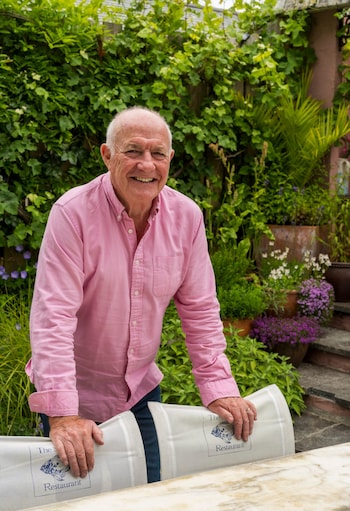
I also remember visiting a friend who made a dish for me using basil he’d grown himself. It was the first time I’d tasted it and I thought it was amazing, I started growing it straightaway. It was exciting. So, that’s when my love affair with herbs began. The funny thing is, the first time I tasted coriander, I thought: “How can anybody like coriander. It’s horrible!” I’ve certainly changed my mind since then.
Did you have a garden as a child?
I grew up in the Cotswolds. I was very lucky because my parents had a farm in Oxfordshire but, as well as the farming, they were also big gardeners. We had a flower garden at the front of the house, with a well-kept lawn and wonderful dahlias in the autumn, and herbaceous borders with lots of white flowers in the back.
As a child, I can remember making this great camp behind one of the large shrubs. It was perfect. But when my father discovered it, he was very unhappy with me. I could never understand why. There was also a kitchen garden, where he grew plenty of veg – leeks, potatoes, runner beans, peas… peas were my favourite!
What would you say is your favourite flower?
My mother’s favourite flower was the sweet pea. I remember them so vividly. All the colours, the wonderful scent in the summer. She grew it every year without fail; I think for all those reasons it’s one of my favourites, too. Another favourite would have to be the humble cowslip with its tiny buttery yellow, bell-shaped flowers.
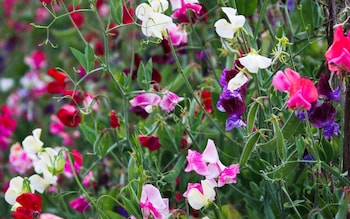
I love all the spring flowers, but this is one I particularly associate with Padstow, because every spring, we have the Padstow May Day Festival. It’s one of the oldest traditions here, possibly dating back to the first century, and everyone wears spring flowers in their buttonholes and hats, including primroses, bluebells and cowslips.
In difficult times, has the garden offered solace…a place to escape?
One of my favourite quotes is from Andrew Marvell’s poem, The Garden: “To a green thought in a green shade,” which I think beautifully conveys the idea that a garden is an intellectual pleasure as much as a physical one. I do less gardening myself now, but I still enjoy planting seeds and watching them grow, I always have. In an ideal world, everybody should have a garden because it’s one of the best ways to get rid of stress and just relax.
It puts you in a mindset where you stop worrying about things. It also tires you out and that’s good for you. I regularly listen to Gardeners’ Question Time; I find it very calming. The show goes all over Britain and, wherever it goes, everybody seems to be in such good humour. There’s a jollity… a hospitality about gardening, and I think that’s because they’re gardeners.
Rick Stein’s Food Heroes (BBC Books, £28) is out now. His new TV series, Food Stories, is on BBC2 at 7pm.
Disclaimer: The copyright of this article belongs to the original author. Reposting this article is solely for the purpose of information dissemination and does not constitute any investment advice. If there is any infringement, please contact us immediately. We will make corrections or deletions as necessary. Thank you.
